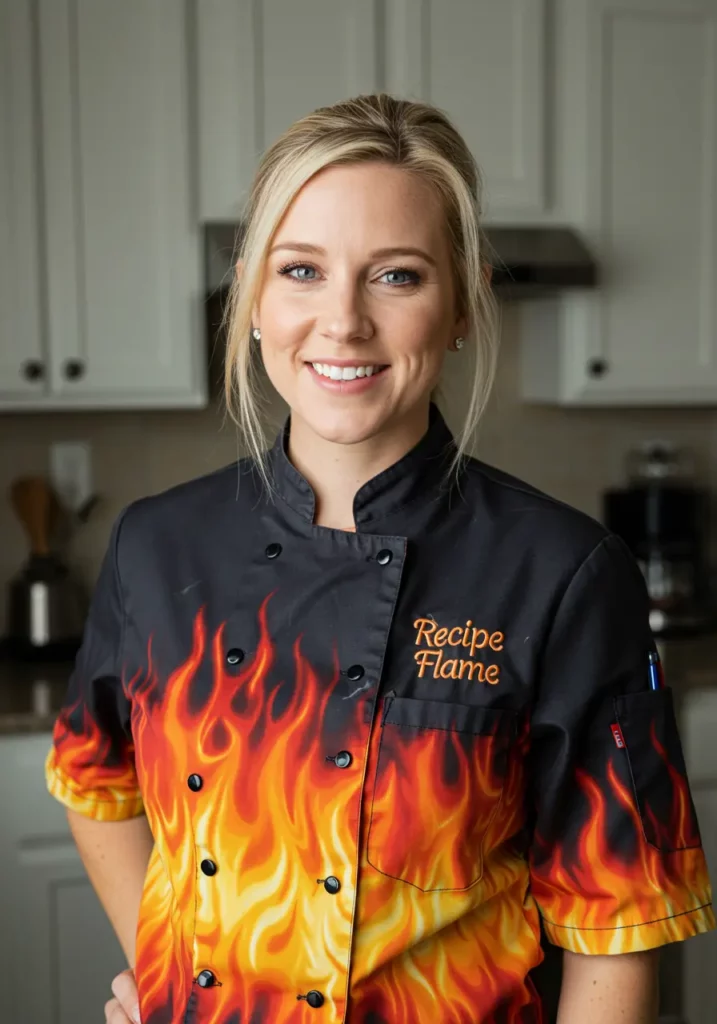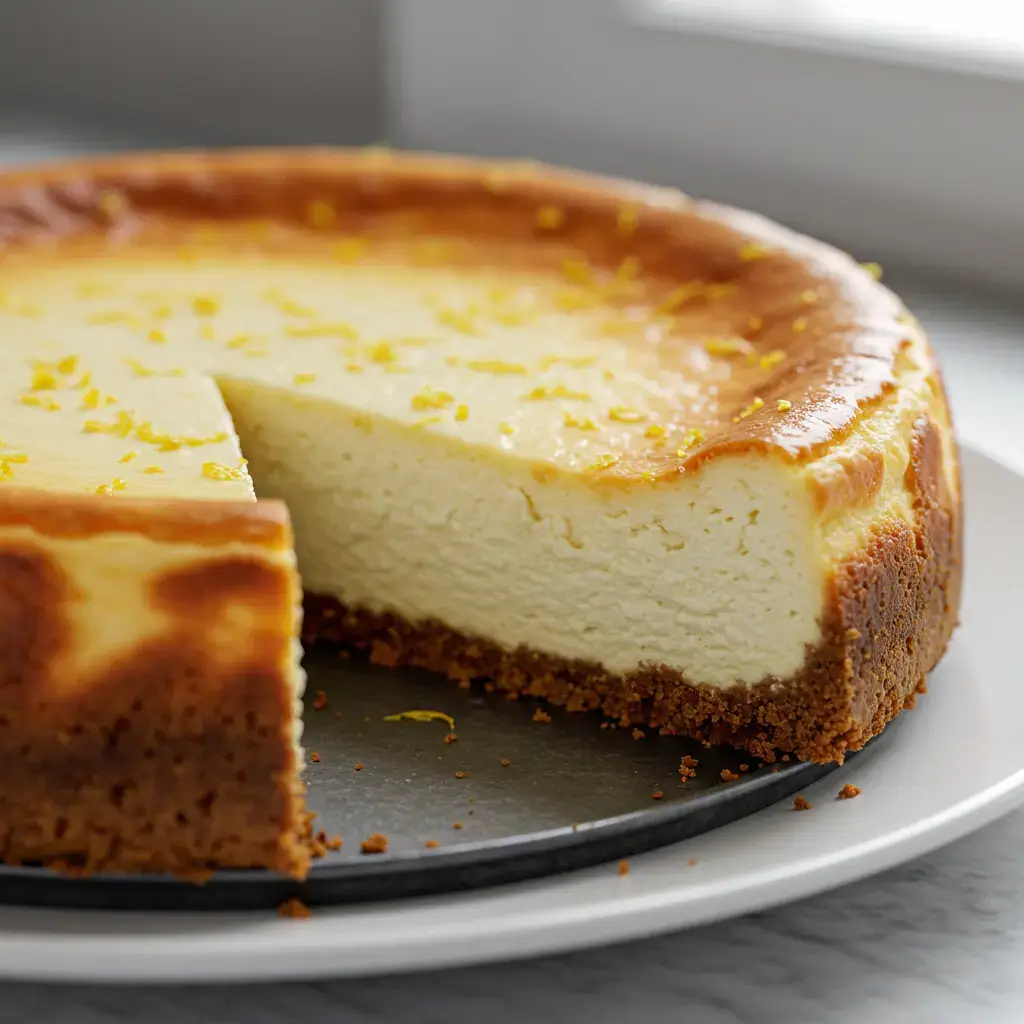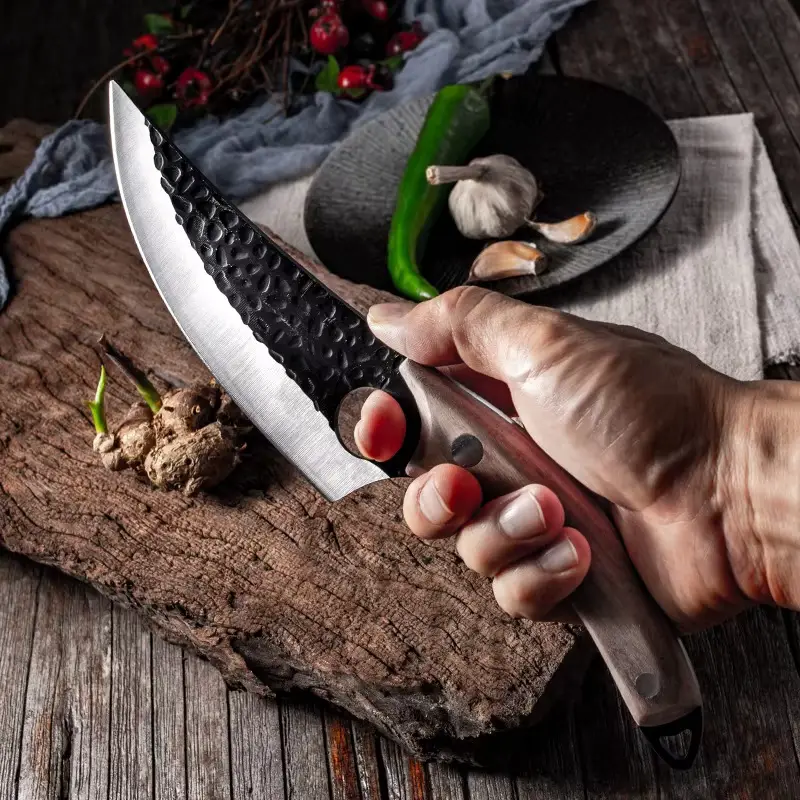When it comes to iconic American desserts, the Classic New York Cheesecake holds a place of honor. Known for its rich, creamy texture and slightly tangy flavor, this cheesecake is a staple on the dessert menus of many restaurants and a favorite at family gatherings. This article will guide you through every step of making this delicious treat, from selecting the right ingredients to serving it in style. Let’s dive into the world of cheesecake mastery!
Ingredients
To create the perfect classic New York cheesecake, you’ll need the following ingredients. Each component plays a crucial role in delivering the signature taste and texture that makes this dessert a beloved classic.
Crust:
- 1 ½ cups graham cracker crumbs
- ⅓ cup melted butter
Filling:
- 4 (8 oz) packages of cream cheese, softened
- 1 cup sugar
- 1 tsp vanilla extract
- 4 large eggs
- 1 cup sour cream
- Zest of 1 lemon
Instructions
Creating a classic New York cheesecake involves precision and patience. Follow these detailed steps to achieve cheesecake perfection.
Step 1: Prepare the Oven and Pan
- Preheat oven to 325°F (160°C).
- Combine graham cracker crumbs and melted butter in a bowl. Mix until the crumbs are well-coated with butter.
- Press the crumb mixture firmly into the bottom of a 9-inch springform pan, ensuring an even layer to form the crust.
Step 2: Make the Cheesecake Filling
- In a large bowl, beat the softened cream cheese until smooth and creamy.
- Gradually add the sugar and vanilla extract to the cream cheese, mixing well after each addition to ensure a smooth consistency.
- Add the eggs one at a time, blending thoroughly after each addition.
- Mix in the sour cream and lemon zest until fully combined, ensuring the mixture is smooth and lump-free.
Step 3: Assemble and Bake
- Pour the cream cheese mixture over the prepared crust in the springform pan, smoothing the top with a spatula.
- Place the cheesecake in the preheated oven and bake for 60-70 minutes, or until the edges are set and the center has a slight jiggle.
- Turn off the oven and let the cheesecake cool inside with the door slightly open for an hour. This gradual cooling helps prevent cracking.
Step 4: Chill and Serve
- Once cooled, transfer the cheesecake to the refrigerator to chill for at least 4 hours, or overnight for best results.
- Before serving, run a knife around the edge of the pan to loosen the cheesecake. Carefully remove the sides of the springform pan and slice the cheesecake with a sharp knife, wiping the blade clean between each cut.
Nutrition Facts
Understanding the nutritional content of your cheesecake can help you make informed decisions about portion sizes and dietary considerations. Here’s a breakdown of the nutritional facts per slice (serves 12):
- Calories: 320
- Protein: 6g
- Total Fat: 22g
- Carbohydrates: 26g
- Sugars: 14g
How to Serve
Serving your classic New York cheesecake can be as simple or as elaborate as you desire. The way you present this dessert can significantly enhance its appeal, making it a centerpiece worthy of any occasion. Here are a few suggestions to elevate your cheesecake presentation and experience:
Plain and Simple
One of the most effective ways to serve your cheesecake is to present it plain and simple. A slice of cheesecake served on a pristine white plate showcases the dessert’s natural beauty. The smooth, creamy texture and rich color of the cheesecake become the focal point, allowing its elegance to shine through. To enhance this minimalist approach, consider garnishing the plate with a light dusting of powdered sugar or a sprinkle of crushed graham crackers, which can add a touch of texture without overwhelming the simplicity of the dish.
With Fresh Berries
Adding fresh berries is an excellent way to bring vibrant color and freshness to your cheesecake. A handful of blueberries, raspberries, or sliced strawberries not only enhances the visual appeal but also complements the rich flavor of the cheesecake with their natural sweetness and slight acidity. For an inviting display, arrange the berries in a fan shape beside the cheesecake slice or pile them atop the cheesecake for an eye-catching presentation. You might also consider macerating the berries in a bit of sugar and lemon juice beforehand to intensify their flavor and create a syrupy glaze that drizzles beautifully over the cheesecake.
Drizzled Sauces
Elevate your cheesecake further by incorporating drizzled sauces. A caramel, chocolate, or berry sauce can add both flavor and visual allure. For a sophisticated touch, you can create a decorative pattern by using a squeeze bottle to drizzle the sauce artistically over the cheesecake or plate. For instance, a rich chocolate ganache can be drizzled in zig-zag patterns, while a raspberry coulis can be splattered for a more abstract, modern look. You might also consider serving the sauce on the side in a small ramekin, allowing guests to control the amount they add, creating a personalized dessert experience.
Whipped Cream
A dollop of freshly whipped cream is a classic accompaniment that adds a light, airy contrast to the dense, creamy cheesecake. To make your whipped cream more special, consider flavoring it with vanilla extract, a hint of almond, or even a splash of liqueur such as amaretto or Grand Marnier. For a visual twist, try piping the whipped cream using a star tip to create decorative peaks on top of the cheesecake. You can also sprinkle some cocoa powder, grated chocolate, or finely chopped nuts on the whipped cream for an added textural element.
Additional Garnishing Options
To further enhance the presentation and flavor of your cheesecake, consider incorporating a few additional garnishing options:
- Citrus Zest: A sprinkle of lemon or orange zest can brighten the dish and add a refreshing note that balances the richness of the cheesecake.
- Mint Leaves: A few fresh mint leaves can add a touch of color and a refreshing aroma, making your cheesecake look even more inviting.
- Chocolate Shavings: For chocolate lovers, adding chocolate shavings on top of the cheesecake or around the plate can create a decadent touch. Use a vegetable peeler to create delicate curls from a chocolate bar.
- Nuts: Chopped toasted nuts, such as pistachios or almonds, can add a satisfying crunch and additional flavor contrast to the creamy texture of the cheesecake.
Serving Suggestions
When it comes to serving, consider the following tips to enhance the overall experience:
- Temperature: Serve your cheesecake chilled but allow it to sit at room temperature for about 10-15 minutes before serving. This will soften the texture slightly, making it easier to slice and enhancing the flavor.
- Portion Sizes: Cut your cheesecake into generous slices, as this is a rich dessert that can be very satisfying. You may also consider making mini cheesecakes or cheesecake bites for a fun and modern twist, ideal for parties or gatherings.
- Beverage Pairings: Complement your cheesecake with the right beverage. A glass of dessert wine, a rich coffee, or even a flavored tea can enhance the overall experience. Offering a small espresso or cappuccino alongside can create a delightful end to a meal.
By considering these serving suggestions, you can transform your classic New York cheesecake into a visually stunning and memorable dessert that will impress your guests and elevate any dining occasion.
Additional Tips
Achieving the perfect cheesecake involves not only following the right recipe but also implementing some expert tips and techniques that can elevate your baking game. Here are some detailed suggestions to ensure your cheesecake turns out creamy, smooth, and free of cracks:
1. Room Temperature Ingredients
One of the most crucial steps in cheesecake preparation is ensuring that all your ingredients are at room temperature. This includes cream cheese, eggs, sour cream, and any other dairy components. When ingredients are cold, they don’t blend together as smoothly, which can result in a lumpy batter.
How to Prepare:
- Take your cream cheese out of the refrigerator at least 1-2 hours before you start mixing. Cut it into small cubes to help it soften more quickly.
- Eggs should also be at room temperature; you can soak them in warm water for about 10-15 minutes if you forgot to take them out ahead of time.
- Sour cream and any other dairy products should follow the same room-temperature protocol.
2. Avoid Overmixing
While it may be tempting to mix your batter until it’s perfectly smooth, overmixing can introduce too much air into the batter. This excess air can cause the cheesecake to puff up during baking and then collapse as it cools, leading to unsightly cracks on the surface.
Best Practices:
- Mix the ingredients just until they are combined. Use a low-speed setting on your mixer or a spatula to gently fold in the ingredients.
- Scrape down the sides of the bowl periodically to ensure everything is evenly incorporated without excessive mixing.
3. Water Bath Technique
Baking your cheesecake in a water bath, or “bain-marie,” is a well-known method among bakers to achieve a smooth, creamy texture. The steam from the water bath helps regulate the temperature around the cheesecake, preventing the edges from cooking too quickly and leading to cracks.
How to Create a Water Bath:
- Wrap the bottom of your springform pan with heavy-duty aluminum foil to prevent water from leaking in. Make sure to cover the pan well, as any water seepage can ruin your cheesecake.
- Place the wrapped pan inside a larger baking dish and fill the outer dish with hot water until it reaches about halfway up the sides of the springform pan.
- Bake as directed, and be prepared for a longer cooking time due to the moisture.
4. Crack Prevention Strategies
Even with the best of intentions, cracks can still occur in cheesecakes. However, there are several strategies you can implement to minimize this risk and ways to address it if it happens.
Tips to Prevent Cracks:
- Temperature Control: Bake your cheesecake at a lower temperature (around 325°F or 160°C) to allow it to cook more evenly.
- Cooling Slowly: Once your cheesecake is done baking, turn off the oven and crack the door open, allowing the cheesecake to cool gradually. This slow cooling process can prevent sudden temperature changes that cause cracks.
- Use a Knife: After baking, you can run a knife around the edge of the cheesecake while it’s still warm. This will help separate it from the pan and reduce the risk of cracks forming as it cools.
What to Do If Cracks Appear:
- If your cheesecake does develop cracks, don’t panic! You can simply cover them with a layer of fruit compote, whipped cream, or a chocolate ganache. This not only disguises the imperfections but also adds a delicious flavor contrast.
By following these expert tips and techniques, you can increase your chances of baking a flawless cheesecake that impresses your family and friends. Remember, practice makes perfect; with each attempt, you’ll learn more about your preferences and may even discover your own variations to make the recipe truly yours.
FAQs
Can I use a different type of crust?
Absolutely! While graham cracker crust is traditional, you can experiment with different types of cookies or even a nut-based crust.
How do I know when the cheesecake is done?
The edges should be set, and the center should have a slight jiggle. It will continue to set as it cools.
Can I make this cheesecake ahead of time?
Yes, cheesecake can be made a day or two in advance. It actually tastes better after chilling overnight.
How do I store leftover cheesecake?
Store leftovers in an airtight container in the refrigerator for up to 5 days. You can also freeze it for longer storage.
What if I don’t have a springform pan?
A springform pan is ideal, but if you don’t have one, you can use a regular cake pan lined with parchment paper. Be sure to leave plenty of overhang for easy removal.
Conclusion
Mastering the art of the classic New York cheesecake is a rewarding endeavor that pays off with each delicious bite. With its creamy texture, rich flavor, and timeless appeal, it’s no wonder this dessert remains a favorite. Whether you’re making it for a special occasion or simply to satisfy a craving, this guide provides all the information you need to create the perfect cheesecake. Enjoy the process, savor the results, and share the love with family and friends. Happy baking!
Print
Classic New York Cheesecake
Ingredients
To create the perfect classic New York cheesecake, you’ll need the following ingredients. Each component plays a crucial role in delivering the signature taste and texture that makes this dessert a beloved classic.
Crust:
- 1 ½ cups graham cracker crumbs
- ⅓ cup melted butter
Filling:
- 4 (8 oz) packages of cream cheese, softened
- 1 cup sugar
- 1 tsp vanilla extract
- 4 large eggs
- 1 cup sour cream
- Zest of 1 lemon
Instructions
Creating a classic New York cheesecake involves precision and patience. Follow these detailed steps to achieve cheesecake perfection.
Step 1: Prepare the Oven and Pan
- Preheat oven to 325°F (160°C).
- Combine graham cracker crumbs and melted butter in a bowl. Mix until the crumbs are well-coated with butter.
- Press the crumb mixture firmly into the bottom of a 9-inch springform pan, ensuring an even layer to form the crust.
Step 2: Make the Cheesecake Filling
- In a large bowl, beat the softened cream cheese until smooth and creamy.
- Gradually add the sugar and vanilla extract to the cream cheese, mixing well after each addition to ensure a smooth consistency.
- Add the eggs one at a time, blending thoroughly after each addition.
- Mix in the sour cream and lemon zest until fully combined, ensuring the mixture is smooth and lump-free.
Step 3: Assemble and Bake
- Pour the cream cheese mixture over the prepared crust in the springform pan, smoothing the top with a spatula.
- Place the cheesecake in the preheated oven and bake for 60-70 minutes, or until the edges are set and the center has a slight jiggle.
- Turn off the oven and let the cheesecake cool inside with the door slightly open for an hour. This gradual cooling helps prevent cracking.
Step 4: Chill and Serve
- Once cooled, transfer the cheesecake to the refrigerator to chill for at least 4 hours, or overnight for best results.
- Before serving, run a knife around the edge of the pan to loosen the cheesecake. Carefully remove the sides of the springform pan and slice the cheesecake with a sharp knife, wiping the blade clean between each cut.
Nutrition
- Serving Size: one normal portion
- Calories: 320
- Sugar: 14g
- Fat: 22g
- Carbohydrates: 26g
- Protein: 6g






